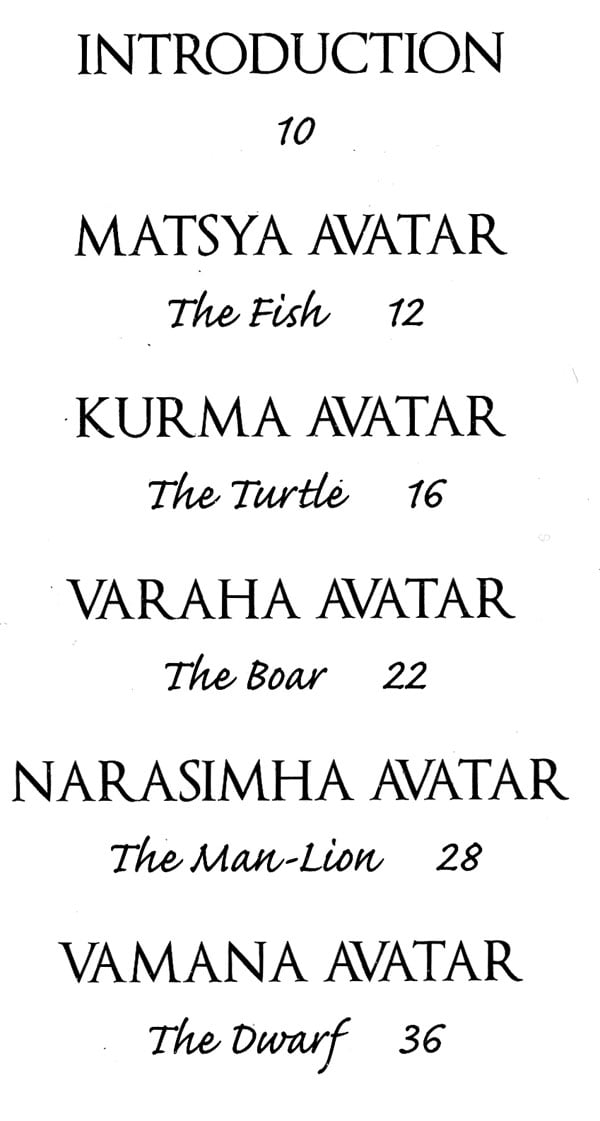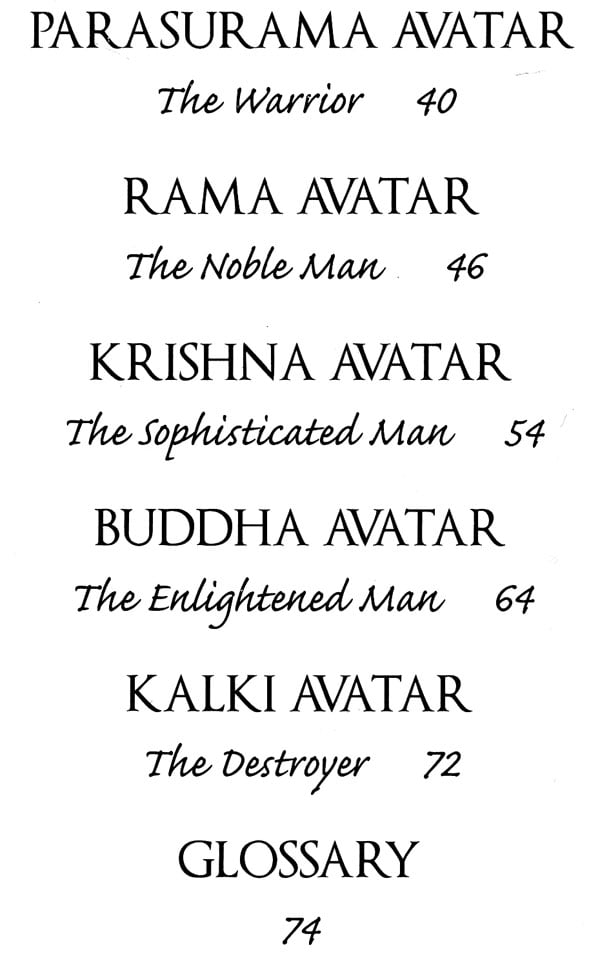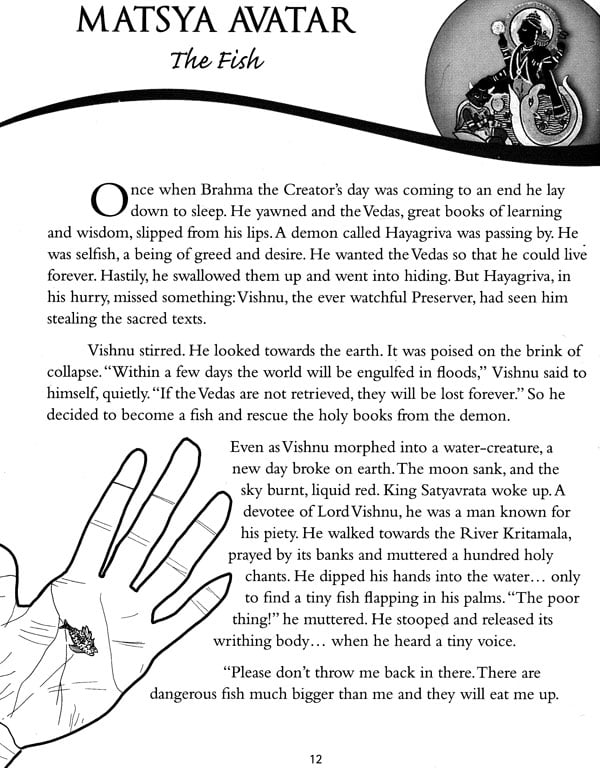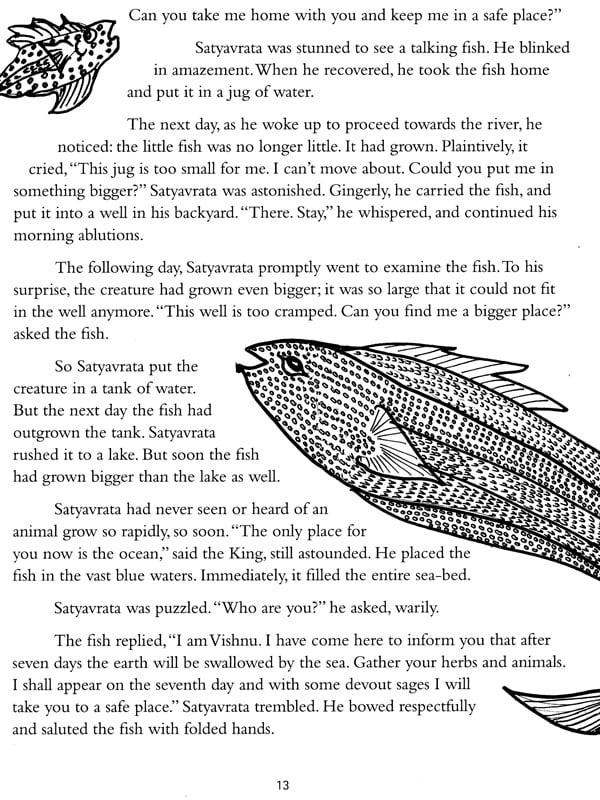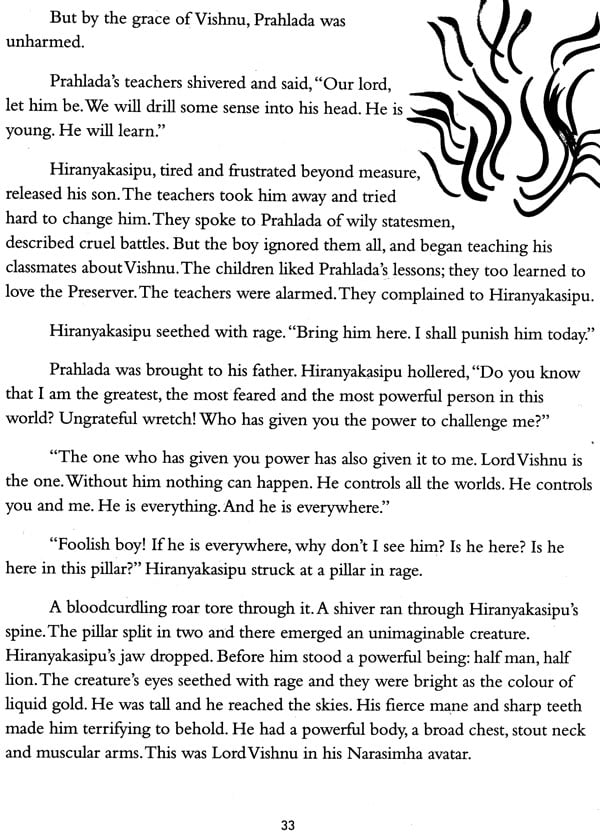
Dashavatar
Book Specification
| Item Code: | NAV735 |
| Author: | Soumya S Ayer |
| Publisher: | Vakils, Feffer and Simons Pvt. Ltd. |
| Language: | English |
| Edition: | 2014 |
| ISBN: | 9788184620177 |
| Pages: | 74 (Throughout B/W Illustrations) |
| Cover: | PAPERBACK |
| Other Details | 0.30 X 8.50 inch |
| Weight | 300 gm |
Book Description
Dashavatar is a collection of ten spell-binding stories for children. In each of the tales, the world is on the brink of collapse, when Vishnu decides to rescue it. He takes on a variety of forms, sometimes splendorous, at other times humble. From Matsya avatar, where Vishnu assumes the shape of a fish, to Vamana avatar, where he shrinks in size, to Krishna avatar, where he becomes the Blue One, each of the stories speaks of the Lord's benevolence and the triumph of good over evil. Written in a style that is lucid and cogent, the book is must-read for every child.
Soumya Ayer grew up listening to stories of Indian folklore and religion from her family elders. She wrote this book with the intention of continuing this tradition with the next generation of children. Her first book, Krishna, The Cowherd Prince, is based on Krishna's childhood. She holds degrees in Engineering and Management and lives in London with her family.
In Hinduism, it is believed that Lord Vishnu, the Supreme Being, descends on earth to help mankind whenever there is trouble. He borrows a form, sometimes disarmingly humble, at other times splendorous; he becomes an avatar. The avatars of Vishnu are mentioned in the religious treatises of Hindu philosophy. Indeed, Sri Krishna explained the concept to Arjuna at length, in his teachings of the Bhagvadgita.
While there are several incarnations of Lord Vishnu, the Dashavatar or the ten manifestations are the main ones. So far, nine avatars have made their appearance. The tenth one promises to emerge only at the end of the present age of Kali. The Kali yug began after Krishna's sacred feet left earth, and with his departure, came corruption, greed and a breakdown of truth. It is believed that with the final avatar, the order of truth and peace will prevail.
The ten avatars are not all human in form. In fact the first few avatars assumed the shape of animals. What unites the avatars though is that they came to earth for a specific purpose — to subdue a demon or overthrow a vile King, and once their job was accomplished, they went away. Rama and Krishna are interesting exceptions to this order, and for this reason, they are known as the poorna (complete) avatars. They had all the powers of Vishnu invested in them, and unlike the other avatars which came for a specific purpose, Rama and Krishna had several duties to perform.
It is important to acknowledge that there is sometimes a debate on whether Buddha is the ninth avatar or Balarama. While Balarama was undoubtedly a seminal character, a form of Adisesha (Vishnu's serpent), this book has followed the tradition of the Bhagvatam and has stuck with Buddha. The ten avatars not only make interesting reading, but there is also speculation that they represent the theory of evolution. Starting from Matsya (the fish), Kurma (the reptile),Varaha (the mammal), Narasimha (half man-half animal), it moves on to Vamana (the small statured man), Parasurama (the hunter), Rama (the noble man), Krishna (the sophisticated man), Buddha (the enlightened man) and Kalki (the destroyer).
These stories teach us the value of humility and the impermanence of the material world. They are timeless, for they carry within them messages that are still relevant for the day and age we live in.
**Contents and Sample Pages**
